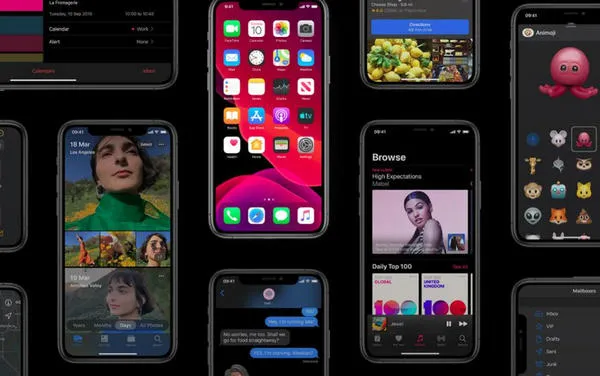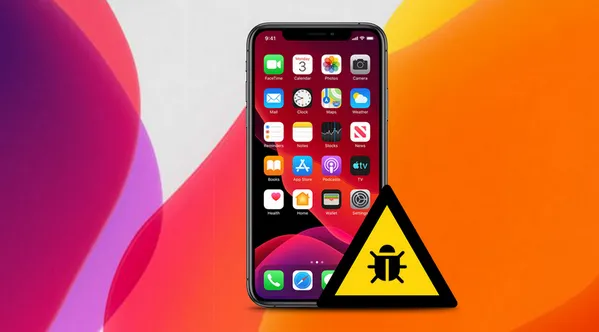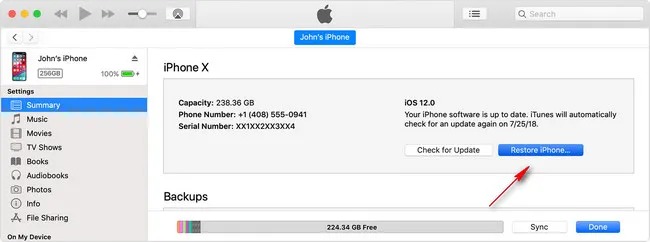Apple's latest software update for the iPhone is finally here and as expected, it comes packed with a host of new features. If you use an iPhone 6S model or later, here are just a few of the things you can look forward to once you upgrade to iOS 13.
Dark Mode is probably the most talked about feature of the latest iPhone software update. As the name suggests, it essentially allows you to switch to a dark mode on your phone, thereby conserving battery and reducing eye-strain in low-light environments. More importantly, it looks amazing! Added to that, iPhone users finally have the swipe-to-type feature included in Apple's new Quickpath keyboard.
Siri has been upgraded as well and Apple's virtual assistant can now read out incoming messages as well as allow you to share audio from your AirPods. Privacy features and Apple Maps too have been updated while Apple's new gaming subscription service, Apple Arcade, has been included in the latest update. Besides these, you can expect a host of changes focused on providing you with a smarter and easier iPhone experience.

But, iOS 13's features come at a cost, and it's a cost that many disgruntled users aren't willing to pay. The beta test and subsequent launch of iOS 13 has revealed a number of bugs plaguing the latest software update. The biggest bug came to light when security researcher Jose Rodriguez revealed that if you are running iOS 13 on your iPhone, anyone can access the contacts on your phone without needing to unlock it.
Apparently, one simply needs to take advantage of Siri's voiceover feature during a FaceTime call and use it to reveal all the contacts stored on a phone. While experts believe this issue will be fixed once iOS 13.1 rolls out on the 30th of September, many users have reported a number of different issues with iOS 13.
From accessibility glitches to impromptu system crashes, it seems like Apple has a lot to work on in the days to come. Even something as simple as taking a screenshot could cause your phone to restart. On the other hand, popular apps like Facebook and Youtube still haven't been optimized for Apple's latest OS and keep crashing or functioning poorly. While it is expected that Apple will address these issues soon, the problems are numerous enough to prompt many users to consider downgrading.

If you've already updated to the new OS and find yourself facing these issues, you might want to downgrade too. Many iPhone users have already downgraded their OS and while the process is simple, you might have to make a few preparations.
Before we begin, you should know that users can no longer downgrade to iOS 12.4. After the public release of a jailbreak for iOS 12.4, Apple stopped signing this version of the firmware last month. However, you can still downgrade to iOS 12.4.1 through a few simple steps.
So are you ready to take the plunge? Excellent. But before we proceed further, you should first take a backup of your entire phone since the downgrade will wipe out all your data. You can either use iCloud or iTunes for the backup. Once you are ready, follow these steps to downgrade your firmware.
Warning: Bakcup your iPhone first before downgrade!
Step 1: You will first need to download the iOS 12.4.1 firmware file to your desktop or laptop by visiting this site.
Step 2: Connect your iPhone to your laptop or desktop via a lightning cable and launch iTunes. Click on the iPhone-shaped icon on the top left hand corner of iTunes.

Step 3: Hold down the left 'Shift' key for Windows and left 'Option' key for Mac and click on the 'Restore iPhone' button on your screen.
Step 4: Find and select the iOS 12.4.1 file you downloaded previously and let iTunes do the rest of the work!
The process will take a while and during this time, you should avoid touching your phone, computer or cable since any disturbance could result in an error. Once the process completes, you will find your phone running iOS 12.4.1 again. Of course, at this point you will have to restore all your data from iCloud or iTunes and you should be good to go.
Apple, being the multinational tech giant that it is, usually responds to such bug reports and endeavours to fix glitches as soon as possible. So you can expect to have a smoother iOS 13 experience in the days to come. However, in the meantime, if you continue to use iOS 13, you are sure to encounter a number of glitches and frequent app crashes.
Moreover, you will end up exposing yourself to a few security and privacy issues as well. Right now, your best bet would be to avoid updating your firmware and if you have already done so, downgrade to iOS 12.4.1. As and when Apple rolls out updates to fix the various bugs, you can then upgrade to the latest OS and avail of all the new features it has to offer.